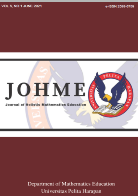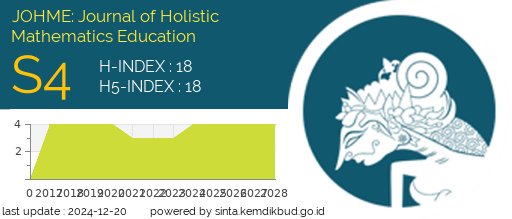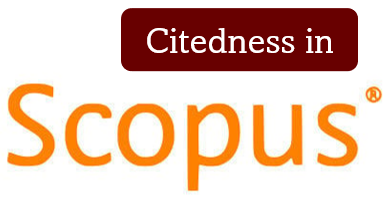BIBLICAL CHRISTIAN WORLDVIEW ON POST-HARVEST PATHOGENIC FUNGI IN THE TRADITIONAL MARKET CORN SEEDS
DOI:
https://doi.org/10.19166/johme.v5i1.2928Schlagworte:
Aspergillus sp, corn seeds, creation, fungi, pathogenic, post-harvest, biji jagung, jamur, pasca panen, patogenik, penciptaanAbstract
The post-harvest fungi is one of the greatest cause of various diseases. Particularly, in fungus that infects seeds, the toxic substance called aflatoxin is found. This has caused us to wonder: Has fungi been pathogenic fungi since the beginning of creation? The purpose of this research is to study: 1) The Place of Fungi in God’s Original Creation and the Origin of Pathogenic Fungi, 2) Characterization of post-harvest fungus on corn seeds, 3) Aspergillus sp.’s Structure as Proof of God’s Wonderful Original Creation and Providence, and 4) The factors that contribute to the growth of fungi in post-harvest corn seeds and our responsibility. We conclude that in the beginning, fungi were a part of God’s originally good and perfect creation. These fungi were created by God with the structure and function to support its operation in fulfilling God’s creative purpose. The complex structure of Aspergillus niger and Aspergillus flavus that infected the corn seeds showed God’s providence after the Fall. Pathogenic fungi were the result of the Fall of man into sin. Their growth is caused by the failure to give proper care to the crops. But this should not discourage us since the Bible tells us that God is continually working to restore His creation. Therefore, we are called to be stewards of His creation, to develop and preserve whatever is entrusted in our hands, including the crops for God’s glory and under His authority until He has fully renewed and restored everything.
BAHASA INDONESIA ABSTRACT: Jamur pasca panen merupakan salah satu penyebab terbesar timbulnya berbagai penyakit, khususnya disebabkan oleh jamur yang menginfeksi biji-bijian dan menghasilkan substansi beracun disebut dengan aflatoksin. Keadaan ini menimbulkan pertanyaan apakah jamur patogenik ada sejak awal penciptaan? Penelitian ini bertujuan untuk mempelajari: 1) Posisi jamur patogenik di awal penciptaan dan asal mula jamur patogenik, 2) karakteristik jamur pasca panen pada biji jagung, 3) struktur Aspergillus sp sebagai bukti dari providensi Allah akan ciptaanNya yang sangat luar biasa, 4) faktor-faktor yang berkontribusi terhadap pertumbuhan jamur pasca panen biji jagung dan Tanggung jawab kita. Dari hasil penelitian ini disimpulkan bahwa pada mulanya, jamur merupakan bagian ciptaan Allah yang sungguh amat baik dan sempurna. Struktur yang kompleks dari Aspergillus niger dan Aspergillus flavus yang menginfeksi biji jagung menunjukkan providensi Allah setelah kejatuhan dosa. Pertumbuhan jamur patogenik merupakan gambaran kejatuhan manusia ke dalam dosa yaitu kegagalan manusia untuk memberikan pemeliharaan yang memadahi pada biji-bijian pasca panen. Namun demikian, keadaan ini tidak mematahkan semangat kita karena Alkitab mengatakan bahwa Allah masih terus bekerja untuk memulihkan ciptaanNya. Oleh karena itu, diharapkan kita semua menjadi pelayan atas ciptaanNya untuk mengembangkan dan menjaga apa yang dipercayakan kepada kita di bawah otoritasNya termasuk biji-bijian untuk memuliakan Allah hingga Dia secara penuh memperbaharui dan memulihkan segala sesuatu
Literaturhinweise
Abdel-Azeem, A. M., Abdel-Azeem, M. A., Abdul-Hadi, S. Y., & Darwish, A. G. (2019). Aspergillus: Biodiversity, ecological significances, and industrial applications. Recent Advancement in White Biotechnology through Fungi, 21-79. https://doi.org/10.1007/978-3-030-10480-1_4
Afzal, H., Shazad, S., & Un Nisa, S. Q. (2013). Morphological identification of Aspergillus species from the soil of Larkana district (Sindh,Pakistan). Asian J Agri Biol, 1(3), 105-117. Retrieved from https://www.asianjab.com/wp-content/uploads/2013/09/3-MS-No.18.pdf
Carson, D. A., & Woodbridge, J. D. (1993). God culture: Essays in honor of Carl F. H. Henry. Grand Rapids, MI: Eerdmans.
Gautam, A. K., & Bhadauria. (2012). Characterization of Aspergillus species associated with commercially stored triphala powder. African Journal of Biotechnology, 11(104), 16814-16823. Retrieved from https://www.ajol.info/index.php/ajb/article/view/130059
Garcia-Rubio, R., Oliveira, H., Rivera, J., & Contador, N. T. (2020). The fungal cell wall: Candida, cryptococcus, and Aspergillus species. Frontiers in Microbiology, 10, 1-13. https://doi.org/10.3389/fmicb.2019.02993
Hoekema, A. A. (1986). Created in God's image. Grand Rapids, MI: Eerdmans Publishing Company.
Hoekema, A. A. (1994). Saved by grace. Grand Rapids, MI: Eerdmans Publishing Company.
Kinyungu, S., Isakeit, T., Ojiambo, P. S, & Woloshuk, C. P. (2019). Spread of Aspergillus flavus and aflatoxin accumulation in post harvested maize treated with biocontrol products. Journal of Stored Products Research, 84, 1-7. https://doi.org/10.1016/j.jspr.2019.101519
Loucks, I. S. (2019). Answers Research Journal 2, 123-131. Retrieved from www.answersingenesis.org/arj/v2/fungi
Mimoune, N. A., Riba, A., Verheecke, C., Mathieu, F., & Sabaou, N. (2016). Fungal contamination and mycotoxin production by Aspergillus spp. in nuts and sesame seeds. Journal of Microbiology, Biotechnology and Food Sciences, 5(4), 301-305. https://doi.org/10.15414/jmbfs.2016.5.4.301-305
Paica, A., Ene, C. I., & Stefan, L. A. (2013). Toxigenic fungi of Aspergillus genus and corn crop vulnerability to infection produced by these. Romanian Journal of Plant Protection, 6, 77-81. Retrieved from https://www.academia.edu/10239811/TOXIGENIC_FUNGI_OF_ASPERGILLUS_GENUS_AND_CORN_CROP_VULNERABILITY_TO_INFECTION_PRODUCED_BY_THESE
Pallavi, R., Uma, T., & Nitin, D. (2014). Post-harvest fungal diseases of fruits and vegetables in Nagpur. International Journal of Life Sciences, Special Issue A2, 56-58. Retrieved from http://files.cluster2.hostgator.co.in/hostgator84521/file/15.sp_ijlsci_132_56-58.pdf
Paulussen, C., Hallsworth, J. E., Alvarez-Perez, S., Nierman, W. C., Hamill, P. G., Blain, D., Rediers, H., & Lievens, B. (2017). Ecology of aspergillosis: Insights into the pathogenic potency of Aspergillus fumigatus and some other Aspergillus species. Microbial Biotechnology, 10(2), 296-322. https://doi.org/10.1111/1751-7915.12367
Richardson, M., & Rautemaa-Richardson, R. (2019). Exposure to Aspergillus in home and healthcare facilities’ water environments: Focus on biofilms. Microorganisms, 7(1), 1-11. https://doi.org/10.3390/microorganisms7010007
Silva, D. M., Batista, L. R., Rezende, E. F., Fungaro, M. H. P., Sartori, D., & Alves, E. (2011). Identification of fungi of the genus Aspergillus section nigri using polyphasic taxonomy. Brazilian Journal of Microbiology, 42(2), 761-773. Retrieved from https://pubmed.ncbi.nlm.nih.gov/24031691/
Taniwaki, M. H., Pitt, J. I., & Magan, N. (2018). Aspergillus species and mycotoxins: Occurrence and importance in major food commodities. Current Opinion in Food Science, 23, 38-43. https://doi.org/10.1016/j.cofs.2018.05.008
Vashishta, B. R., Sinha, A. K., & Adarsh, K. (2016). Botany for degree students: Fungi. New Delhi: S. Chand Publishing.
Wilkinson, L. (1993). The uneasy conscience of the human race: Rediscovering creation in the environmental movement in God and culture: Essays in honor of Carl F. H. Henry. Grand Rapids, MI: William B. Eerdmans Publishing Company.
Zhang, S., Zheng, Q., Xu, B., & Liu, J. (2019). Identification of the fungal pathogens of postharvest disease on peach fruits and the control mechanisms of bacillus subtilis jk-14. Toxins, 11(6), 322-337. https://doi.org/10.3390/toxins11060322
Zulkifli, N. A., & Zakaria, L. (2017). Morphological and molecular diversity of Aspergillus from corn grain used as livestock feed. HAYATI Journal of Biosciences, 24(1), 26-34. https://doi.org/10.1016/j.hjb.2017.05.002Downloads
Veröffentlicht
Zitationsvorschlag
Ausgabe
Rubrik
Lizenz
Authors who publish with this journal agree to the following terms:
1) Authors retain copyright and grant the journal right of first publication with the work simultaneously licensed under a Creative Commons Attribution License (CC-BY-SA 4.0) that allows others to share the work with an acknowledgement of the work's authorship and initial publication in this journal.
2) Authors are able to enter into separate, additional contractual arrangements for the non-exclusive distribution of the journal's published version of the work (e.g., post it to an institutional repository or publish it in a book), with an acknowledgement of its initial publication in this journal.
3) Authors are permitted and encouraged to post their work online (e.g., in institutional repositories or on their website). The final published PDF should be used and bibliographic details that credit the publication in this journal should be included.”










